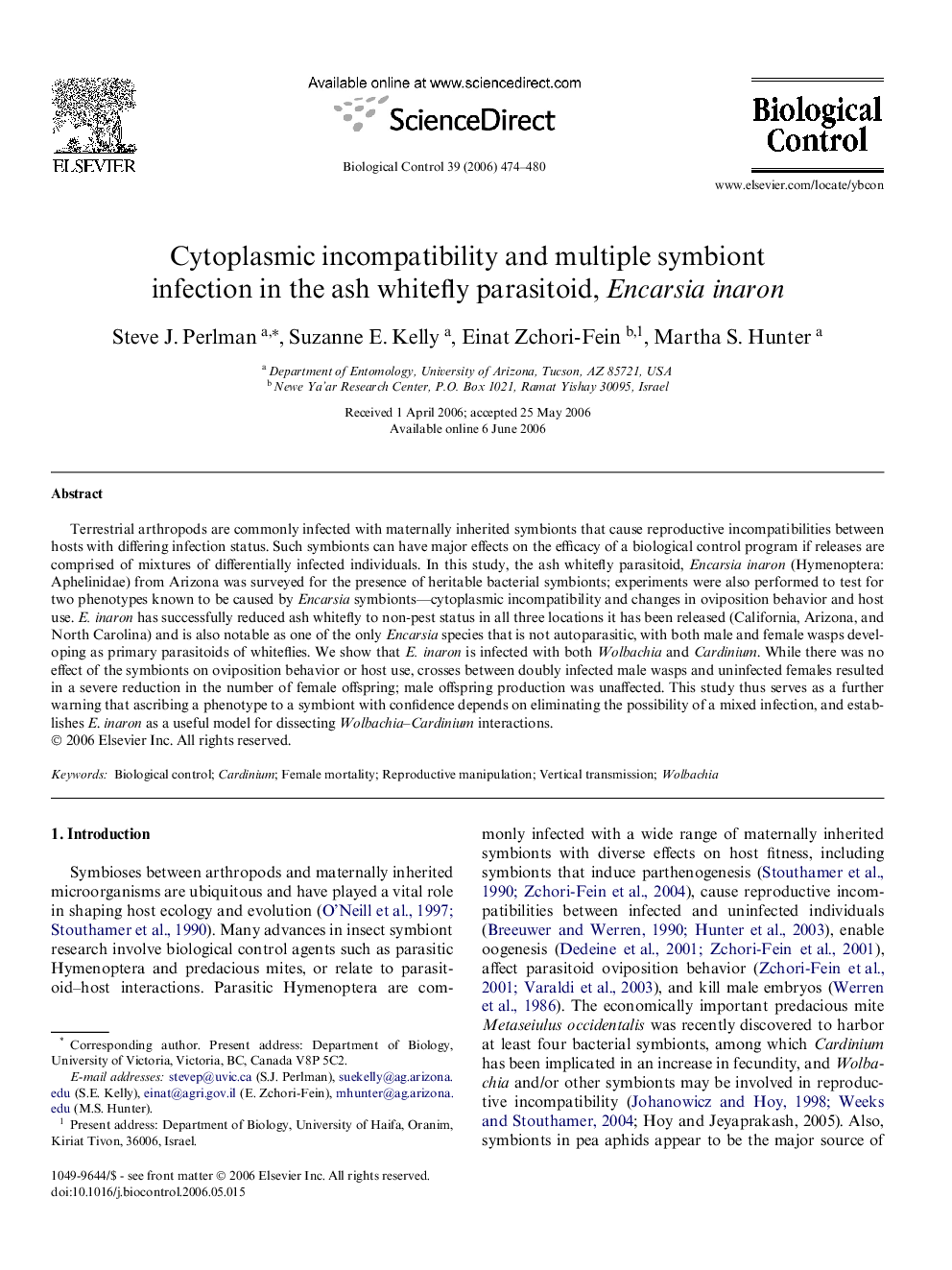| Article ID | Journal | Published Year | Pages | File Type |
|---|---|---|---|---|
| 4505397 | Biological Control | 2006 | 7 Pages |
Terrestrial arthropods are commonly infected with maternally inherited symbionts that cause reproductive incompatibilities between hosts with differing infection status. Such symbionts can have major effects on the efficacy of a biological control program if releases are comprised of mixtures of differentially infected individuals. In this study, the ash whitefly parasitoid, Encarsia inaron (Hymenoptera: Aphelinidae) from Arizona was surveyed for the presence of heritable bacterial symbionts; experiments were also performed to test for two phenotypes known to be caused by Encarsia symbionts—cytoplasmic incompatibility and changes in oviposition behavior and host use. E. inaron has successfully reduced ash whitefly to non-pest status in all three locations it has been released (California, Arizona, and North Carolina) and is also notable as one of the only Encarsia species that is not autoparasitic, with both male and female wasps developing as primary parasitoids of whiteflies. We show that E. inaron is infected with both Wolbachia and Cardinium. While there was no effect of the symbionts on oviposition behavior or host use, crosses between doubly infected male wasps and uninfected females resulted in a severe reduction in the number of female offspring; male offspring production was unaffected. This study thus serves as a further warning that ascribing a phenotype to a symbiont with confidence depends on eliminating the possibility of a mixed infection, and establishes E. inaron as a useful model for dissecting Wolbachia–Cardinium interactions.
